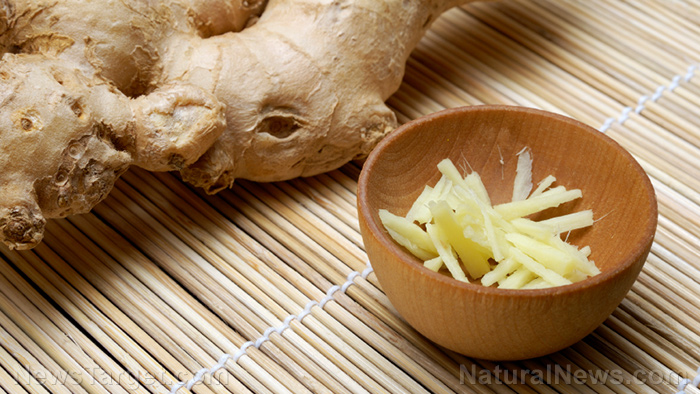The bark of this rainforest tree from Australia inhibits the growth of pathogenic bacteria
01/30/2019 / By Ellaine Castillo

Drug-resistant pathogens are becoming more prevalent these days due to the excessive and improper use of antibiotics and antiseptics. Because of this, there is a need to find compounds that are effective against these microorganisms. Researchers from Griffith University in Australia found that Oliver’s sassafras (Cinnamomum oliveri) exhibits potent antibacterial activity and therefore has potential use in the development of antiseptics.
Oliver’s sassafras, also known as camphorwood, black sassafras, or cinnamon wood, is a rainforest tree endemic to Australia. It’s primarily used for its strong timber, but can also be utilized as a local substitute for cinnamon and as folk medicine. The traditional use of Oliver’s sassafras can be traced back to the Australian Aborigines who made decoctions from its bark and leaves, which they used to treat diarrhea, dysentery, and other bacterial diseases. Previous reports have shown that the leaves of this tree contain terpenoids, such as camphor, safrole, eugenol, methyl eugenol, and cinnamic aldehyde, that are associated with antibacterial activities. Unfortunately, there are limited studies on the antibacterial potential of its leaves.
The goal of this study, which was published in the journal Pharmacognosy Communications, was to evaluate the antibacterial activity of Oliver’s sassafras and identify the compounds that potentially contribute to this effect. To do this, the researchers first collected extracts from dried and powdered leaves of the tree and then conducted phytochemical analysis using different assays. They found that the extracts contain high levels of phenolic compounds and flavonoids, as well as low levels of triterpenoids, alkaloids, phytosterols, and saponins. These compounds have been reported to have antibacterial properties.
The team then proceeded to assess the antibacterial activity of Oliver’s sassafras leaf extracts using a disc diffusion assay and bacterial growth time course assay. For these experiments, they used various microbial strains, including Aeromonas hydrophila, Alcaligenes feacalis, Bacillus cereus, Citrobacter freundii, Klebsiella pneumoniae, Proteus mirabilis, Pseudomonas fluorescens, Salmonella newport, Serratia marcescens, Shigella sonneii, Staphylococcus aureus, Staphylococcus epidermidis, Streptococcus pyonenes, and E. coli. The results showed that Oliver’s sassafras has potent antibacterial activity and that it was especially effective against P. mirabilis and K. pneumoniae, which cause rheumatoid arthritis and ankylosing spondylitis, respectively.
In the next part of the study, the researchers determined the toxicity of Oliver’s sassafras leaf extracts through a brine shrimp (Artemia franciscana) lethality assay. The experiment revealed that the extracts were non-toxic up to a concentration of 1000 micrograms/ml. This indicates that the extracts are safe for internal and topical use.
Overall, these results show that the leaves of Oliver’s sassafras have potent antibacterial activity, which can be attributed to its phytochemical content, and are also non-toxic. These findings support the traditional use of the plant against bacterial diseases. Moreover, they point to the possible use of Oliver’s sassafras in the development of antiseptics, especially against drug-resistant pathogens. (Related: Life-threatening, infectious bacteria develop resistance to antiseptic used in hospital baths.)
Other natural antiseptics
Some other products that can be used as natural antiseptics include the following:
- Apple cider vinegar — The acetic acid in apple cider vinegar makes it a strong antiseptic, which you can use to clean wounds or even items like medical instruments.
- Baking soda — Baking soda doesn’t just prevent bacterial growth, it can also kill parasites, fungi, and mold.
- Oregano essential oil — The powerful antibacterial activity of oregano essential oil is even effective against drug-resistant strains of E. coli.
- Tea tree oil — This natural antiseptic and disinfectant is especially effective in treating skin conditions, including acne, eczema, insect bites, and nail fungal infections.
- Witch hazel — Witch hazel contains tannins that help fight bacteria. Moreover, this product has the ability to reduce swelling and repair broken skin, which is why it’s effective against mosquito bites, chicken pox, eczema, and irritation due to poison oak or poison ivy.
Learn of other plants that can inhibit pathogenic bacteria at PlantMedicine.news.
Sources include:
Tagged Under: alternative medicine, antibacterial, antiseptic, Australian rainforest tree, Cinnamomum oliveri, medicinal plants, natural remedies, Oliver's sassafras, plant cures, rainforest tree



















